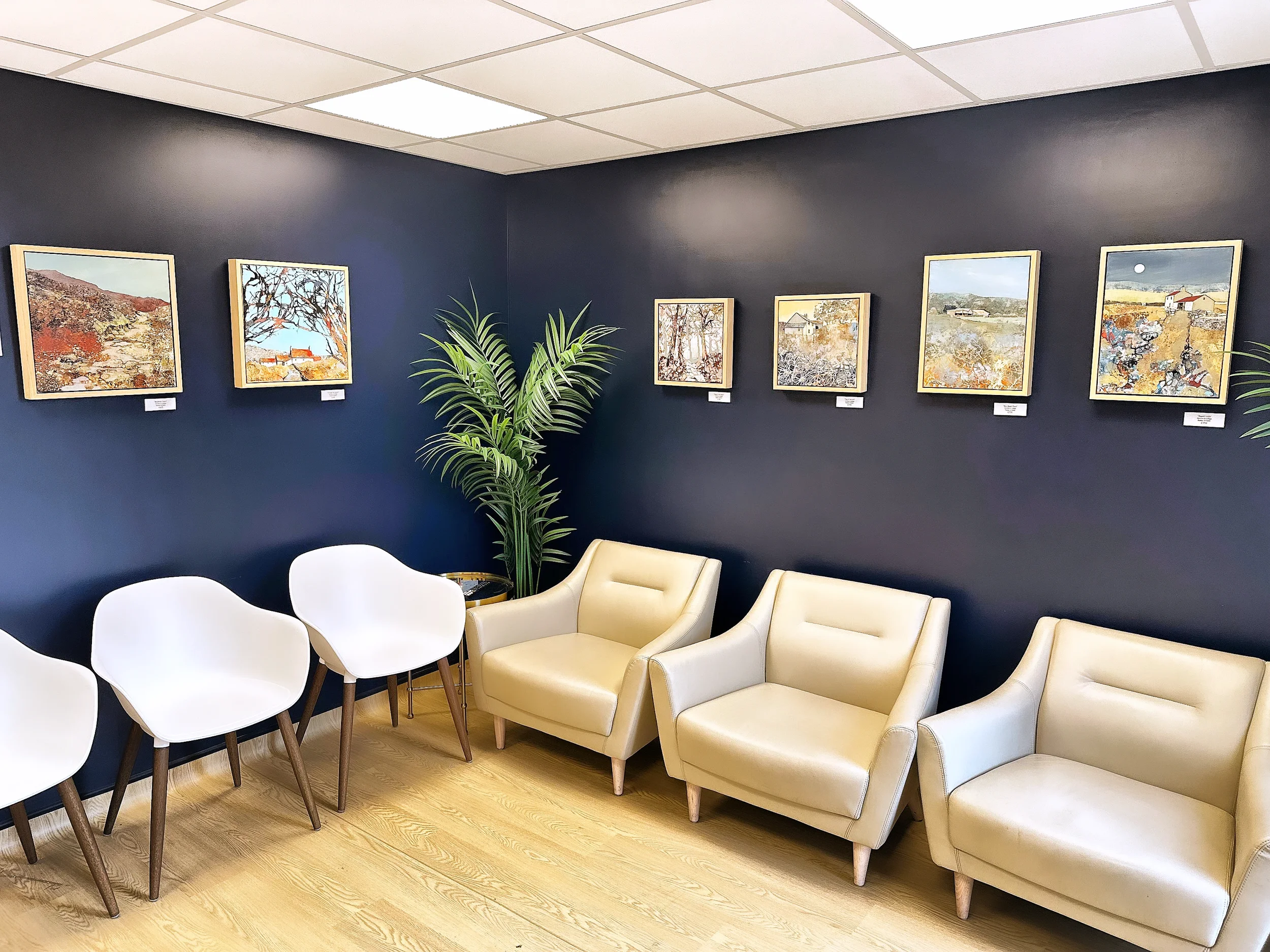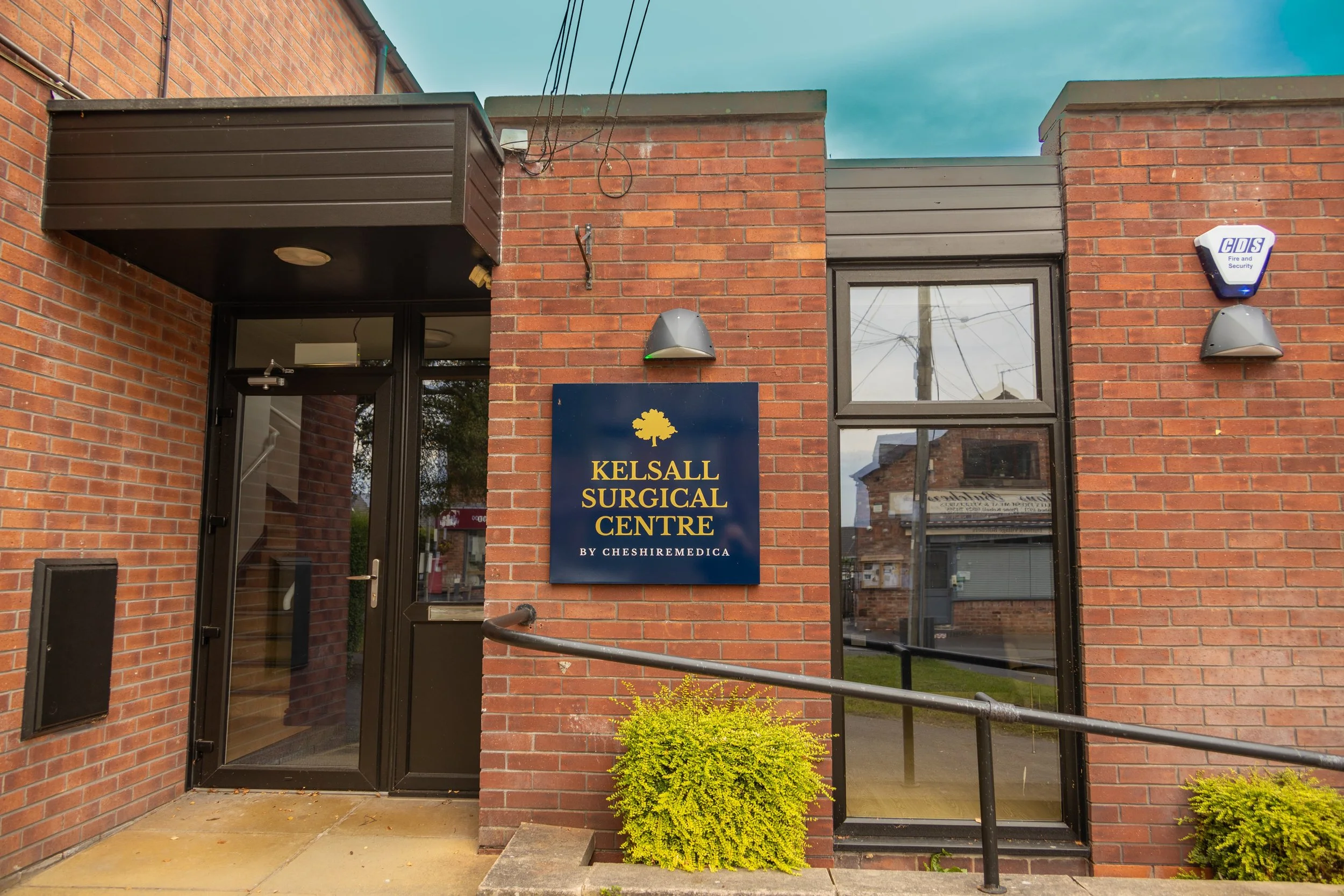Eyelid Hooding (Dermatochalasis)
Restore clear vision and natural symmetry with expert eyelid surgery
At The Eye Clinic, part of Kelsall Surgical Centre, we provide advanced ptosis surgery to correct drooping eyelids that affect both vision and appearance. Our experienced oculoplastic surgeons deliver precise, safe, and individually tailored care — helping you see clearly and feel confident again.
What is Eyelid Hooding?
Eyelid hooding, medically known as dermatochalasis, is the presence of excess skin (and sometimes fat or muscle) on the upper eyelid, which can create a drooping or “hooded” appearance. While it is often a cosmetic concern, it can also affect vision and eyelid comfort.
Why Does It Happen?
Eyelid hooding can result from:
Ageing: Loss of skin elasticity and weakening of underlying tissues.
Genetics: Family history of early hooding or excess lid skin.
Medical conditions: Thyroid eye disease, previous surgery, or chronic swelling.
Lifestyle factors: Sun exposure, smoking, or repeated eyelid stress.
How Eyelid Hooding Affects You
Hooded eyelids may cause:
A heavy sensation in the eyelids
Difficulty applying make-up or cleaning the eyelid fold
A tired or aged appearance
In some cases, reduced upper or peripheral vision
Why Choose Us?
Choose us and feel great about your eye health.
Trusted Local Care
Always performed by experienced ophthalmologists.
Advanced Diagnostics
Latest equipment for precise images and measurements.
Calm, Modern Clinic
Comfortable, local surgical setting.
Personalised Approach
Tailored to your vision and lifestyle needs.
Assessment and Treatment Process
1. Consultation & Examination
Full assessment of eyelid skin, fat, muscle, and brow position
Vision and eyelid function evaluation
Discussion of your goals, lifestyle needs, and expectations
Photographs taken for your records
2. Treatment Options
Upper eyelid surgery (blepharoplasty) is the most common approach for hooding
Incisions are placed in natural eyelid creases to minimise visible scarring
Surgery can be local anaesthetic with sedation or general anaesthetic for combined procedures
Tailored approach may include brow lift if necessary
3. Recovery & Aftercare
Day-case procedure with same-day discharge
Bruising and swelling typically settle within 1–2 weeks
Post-operative instructions include head elevation, ointments/drops, and activity modification
Follow-up appointments ensure proper healing and eyelid position
Who is Suitable?
Candidates for treatment:
Have excess upper eyelid skin affecting vision or comfort
Are in good general health
Have realistic expectations regarding outcomes
Mild hooding may not require surgery but should be monitored if vision or comfort is affected.
Risks & Considerations
All surgical procedures carry risks, including:
Bruising, swelling, irritation, or dry eyes
Small visible scarring (usually hidden in the eyelid crease)
Asymmetry or under/over-correction
Rarely, more serious complications
Our team will discuss all risks tailored to your circumstances.
Blepharoplsaty
Find out more about surgery for eyelid hooding/dermatochalasis at Kelsall Surgical Centre.
Frequently Asked Questions
Q: What is eyelid hooding?
A: Eyelid hooding, or dermatochalasis, is the presence of excess skin (and sometimes fat or muscle) on the upper eyelids. This can create a drooping appearance and, in some cases, affect vision.
Q: How do I know if I have eyelid hooding?
A: Common signs include a heavy or tired appearance of the upper eyelids, difficulty applying make-up, and in advanced cases, a reduction in your upper or peripheral vision. A specialist assessment can confirm the diagnosis.
Q: What causes eyelid hooding?
A: Ageing is the most common cause, as skin loses elasticity and underlying tissues weaken. Genetics, medical conditions (like thyroid eye disease), prior eye surgery, and lifestyle factors such as sun exposure can also contribute.
Q: Will eyelid hooding get worse over time?
A: In most cases, hooded eyelids gradually progress with age. Early assessment can help determine whether treatment is appropriate before vision or comfort is affected.
Q: What treatment options are available?
A: The most common treatment is upper eyelid surgery (blepharoplasty), which removes excess skin and may reposition fat. Some patients may require additional procedures like a brow lift, depending on the underlying anatomy.
Q: Is eyelid surgery safe?
A: When performed by a specialist oculoplastic surgeon in a modern clinic, eyelid surgery is very safe. Minor side effects like bruising and swelling are common, while serious complications are rare.
Q: What is the recovery like?
A: Most patients can go home the same day. Bruising and swelling usually settle within 1–2 weeks, and most normal activities can resume gradually. Full healing, including scar maturation, continues over several months.
Q: Will there be visible scarring?
A: Incisions are placed in the natural eyelid crease to minimise visible scarring. Scars typically fade over time and are often barely noticeable.
Q: How long do the results last?
A: Results are long-lasting, but ageing will continue naturally. Some patients may benefit from additional treatments in the future.
Q: Am I suitable for treatment?
A: Suitable candidates are in good general health, have excess eyelid skin affecting vision or comfort, and have realistic expectations about outcomes. A personalised consultation will determine the best approach.
Q: How do I book a consultation?
A: Contact The Eye Clinic at Kelsall Surgical Centre by phone at [insert number] or through our online enquiry form to schedule a personalised consultation with our specialist oculoplastic team.
Book A Consultation
Our expert team are here to help, talk your through the process and arrange your appointment with one of our specialist Ophthalmologists.
Find Us
Kelsall Surgical Centre,
Church Street, Kelsall,
Cheshire, CW6 0QG
The Eye Clinic is based at Kelsall Surgical Centre in Kelsall. Our location is a friendly village eye clinic with convenient access and parking for patients seeking exceptional eye care. We accept patients over the age of 18, from anywhere in the UK, including Cheshire, Wirral, North Wales, Merseyside, Chester, Heswall, Liverpool, Birkenhead, Wallasey, Upton, Ellesmere port, Winsford, Crewe, Northwich, Runcorn and beyond.






